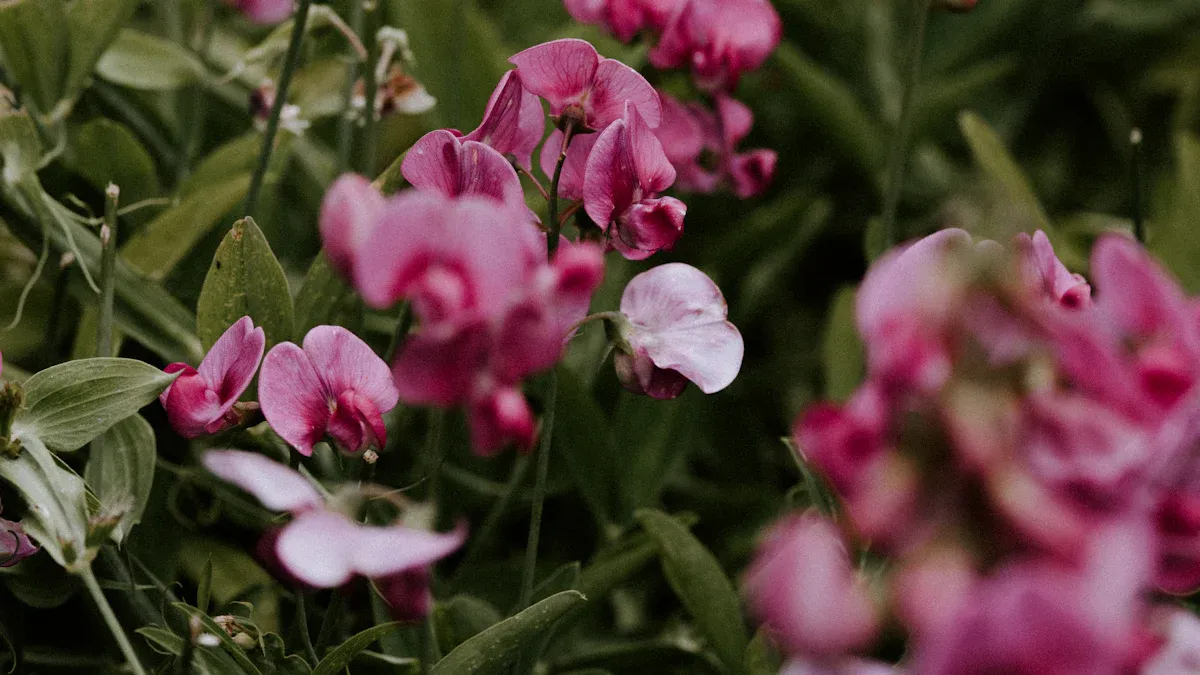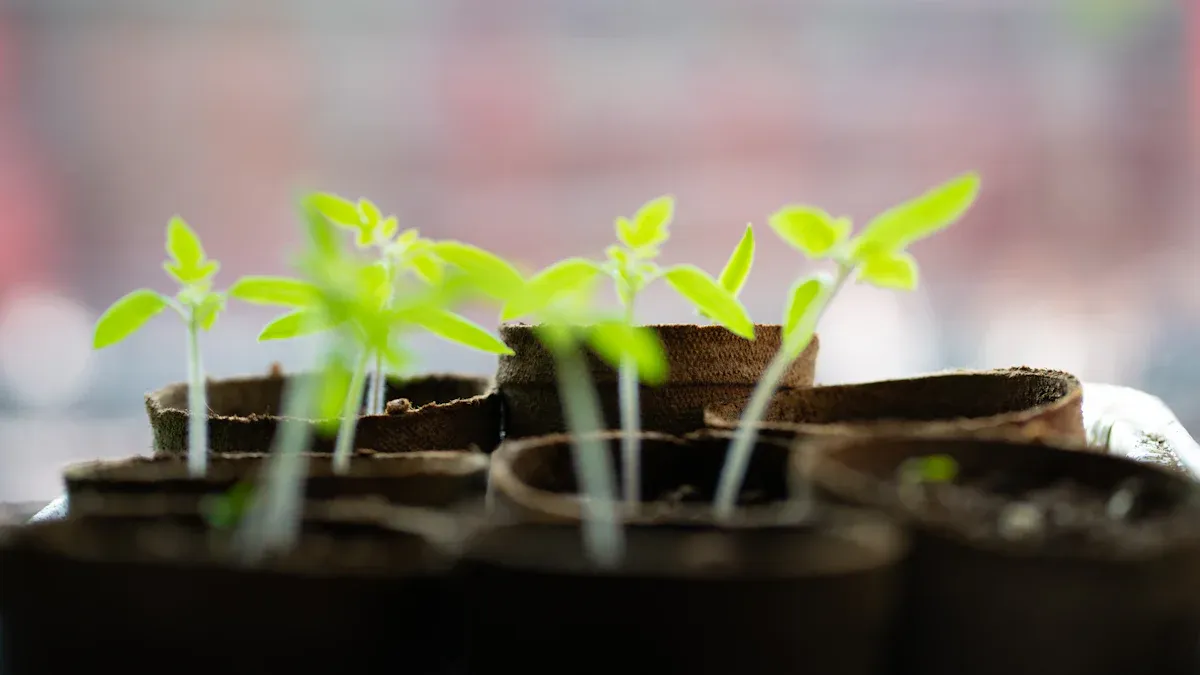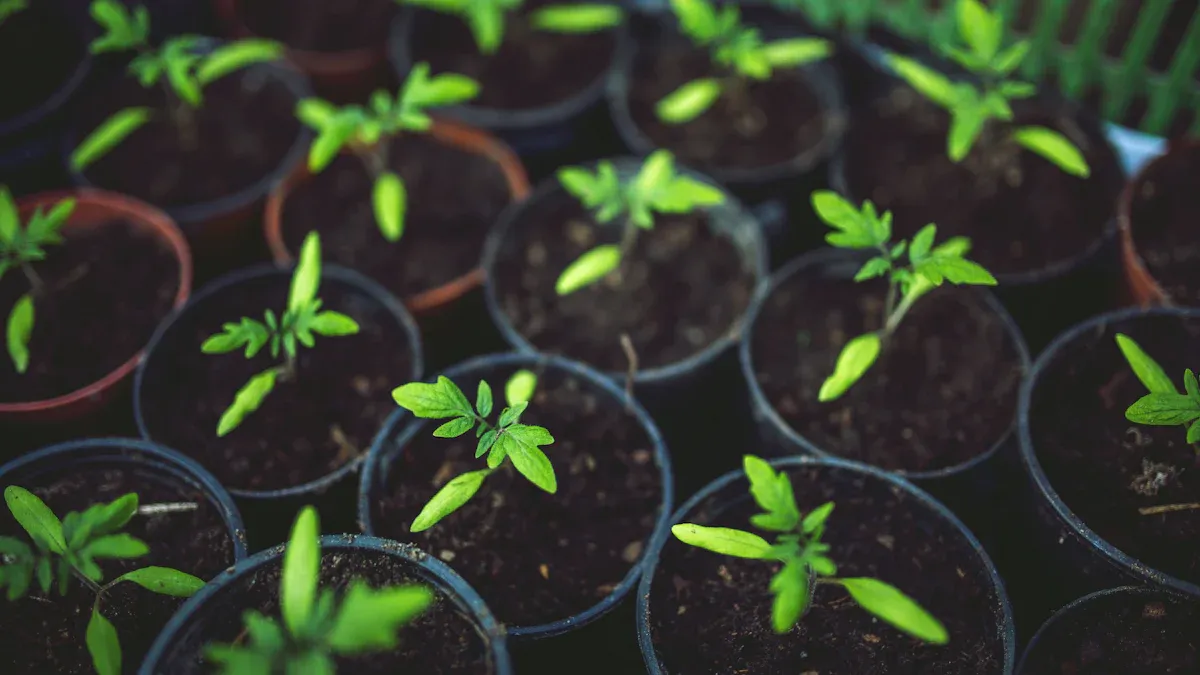
Sweet pea plants grow relatively quickly, with germination typically occurring in 14 to 21 days. After sprouting, you can expect seedlings to develop into young plants within 3 to 4 months. Finally, blooming usually begins 4 to 6 weeks after the plants start vining. To achieve optimal growth, pay attention to conditions like:
Optimal temperature for germination: 55-65°F (13-18°C)
Soil quality, as poor conditions can hinder growth significantly
With proper care, your sweet pea plant grow will flourish beautifully.
Key Takeaways
Sweet pea seeds germinate in 14 to 21 days. Prepare seeds by soaking or scarifying to improve germination rates.
Seedlings grow into young plants within 3 to 4 months. Provide consistent moisture and the right temperature for healthy growth.
Expect blooms 4 to 6 weeks after the plants start vining. Use low-nitrogen fertilizer to support flowering.
Ensure sweet peas receive 6-8 hours of sunlight daily. Insufficient light can slow growth and reduce blooms.
Watch for pests like aphids and slugs. Regular inspections help keep your plants healthy and thriving.
Germination

Seed Preparation
To maximize the germination rates of sweet pea seeds, you should prepare them properly. Here are some effective methods:
Soaking: Soaking seeds in water softens the seed coat. This process improves moisture penetration and speeds up germination.
Scarifying: Nicking the seed coat creates an entry point for moisture. This step is essential for triggering germination.
Using Hydrogen Peroxide: This method helps break down tough seed coats, further enhancing the germination process.
By following these steps, you can ensure that your sweet pea seeds are ready to sprout.
Ideal Conditions
Creating the right environment is crucial for successful germination. Here are the ideal conditions you should aim for:
Soil Temperature: The optimal soil temperature for sweet pea seed germination ranges from 40-75°F. The best temperature for germination is around 75°F.
Soil Moisture: Sweet peas prefer consistent soil moisture without drastic fluctuations. Keep the garden soil evenly moist but not waterlogged.
Humidity: Maintaining a humidity dome over your sweet pea seedlings helps keep the soil moist. This practice is essential for effective germination.
Remember, maintaining the right moisture balance is crucial. Excess moisture can drown seeds, while insufficient moisture can hinder germination.
Avoid common mistakes during germination, such as:
Overwatering: Wait until the soil is almost dry before watering your seeds.
Not Watering Enough: Ensure seedlings do not shrivel up from lack of water.
Sowing Seeds at the Wrong Depth: Check seed packets for planting depth; smaller seeds should be closer to the surface, while larger seeds can be planted deeper.
Not Having Drainage Holes: Ensure containers have holes to prevent waterlogging.
Sowing Seeds Indoors Too Early: Avoid starting seeds too early to prevent leggy growth.
Hardening Plants Off Too Quickly: Gradually introduce seedlings to outdoor conditions to prevent sun scald and wind damage.
By paying attention to these factors, you can create an ideal environment for your sweet pea plant grow, leading to healthy seedlings and vibrant blooms.
Sweet Pea Plant Grow: Seedlings

Growth Timeline
After germination, sweet pea seedlings grow rapidly. You can expect them to develop from sprout to young plant within 3 to 4 months. Here’s a breakdown of the growth timeline:
Week 1-2: Seedlings establish roots, which can reach nearly 6 inches long in just two weeks.
Week 3-4: The first set of true leaves appears. At this stage, you should pinch back the seedlings to encourage side growth.
Month 2-3: The plants continue to grow taller and bushier, developing more leaves and stems.
Month 4: By this time, your sweet pea plants should be robust and ready to start vining.
Factors Affecting Growth Rate
Several factors influence how quickly your sweet pea seedlings grow. Here are the key elements to consider:
Light Exposure: Sweet Pea ‘Brilliant’ requires 6-8 hours of sunlight daily for optimal growth. Insufficient light can slow down growth significantly.
Watering Frequency: Consistent moisture is crucial. Water your seedlings when the top inch of soil feels dry. Avoid waterlogging, as it can lead to root rot.
Soil Quality: Sweet peas thrive in well-draining soil with a neutral pH around 7.5. Amending the soil with compost or well-rotted manure can provide essential nutrients.
Temperature: Starting seeds at higher temperatures (around 75°F) promotes quick germination. After germination, cooler conditions (30-50°F) are ideal to prevent legginess.
Pest Management: Pests like aphids and thrips can impair nutrient uptake, leading to stunted growth. Regularly check your plants for signs of infestations and take action promptly.
By paying attention to these factors, you can ensure that your sweet pea plant grow thrives, leading to a vibrant and healthy garden.
Blooming Stage
Time to First Blooms
You can expect your sweet pea plants to start blooming 4 to 6 weeks after they begin vining. This period marks an exciting time in your gardening journey. As the plants grow, you will see vibrant flowers emerge, adding beauty to your garden.
Care for Optimal Blooming
To ensure your sweet pea plants bloom beautifully, follow these care tips:
Fertilization: Use a slow-release granular fertilizer with a lower nitrogen ratio. This approach supports flowering instead of excessive foliage growth. Fertilize once or twice during the growing season to maintain healthy blooms.
Watering: Sweet peas prefer the soil to dry out between waterings. Regular weekly watering keeps the soil moist during the growing season. Test the soil moisture by placing your finger one inch into the dirt. If it feels damp, skip watering; if dry, it’s time to water.
Pruning: Regularly deadhead wilted blooms to encourage new flowers. Pinching out shoots when seedlings reach 7.5-10 cm promotes stronger side shoots, enhancing overall plant vigor and bloom production. After flowering, prune the plants to encourage new growth for the next cycle.
Light Exposure: Ensure your sweet peas receive 6-8 hours of sunlight daily. Insufficient light can lead to leggy growth and fewer blooms.
Pest Management: Watch for pests like slugs and aphids. These can damage your plants and hinder blooming. Regularly inspect your plants and take action if you notice any infestations.
By following these care tips, you can enhance your sweet pea plant grow experience and enjoy a garden filled with beautiful blooms.
In summary, sweet pea plants grow quickly through distinct stages. Germination takes about 14 to 21 days. Seedlings develop into young plants within 3 to 4 months. You can expect blooms 4 to 6 weeks after the plants start vining. Remember, sweet peas are annual plants, meaning they complete their life cycle in one growing season.
Starting your own sweet pea garden can be a rewarding experience. Enjoy watching your plants grow and flourish! 🌱✨
FAQ
How long does it take for sweet pea seeds to germinate?
Sweet pea seeds typically germinate within 14 to 21 days under optimal conditions.
What type of soil is best for sweet peas?
Sweet peas thrive in well-draining soil with a neutral pH around 7.5. Adding compost can improve soil quality.
How often should I water my sweet pea plants?
Water your sweet pea plants when the top inch of soil feels dry. Avoid overwatering to prevent root rot.
Can I grow sweet peas in containers?
Yes, you can grow sweet peas in containers. Ensure the container has drainage holes and use quality potting soil.
What pests should I watch for with sweet peas?
Common pests include aphids and slugs. Regularly inspect your plants and take action if you notice any infestations.
